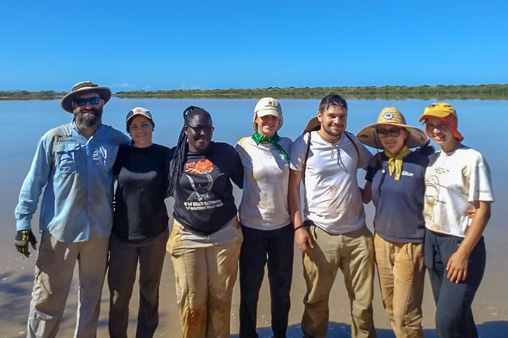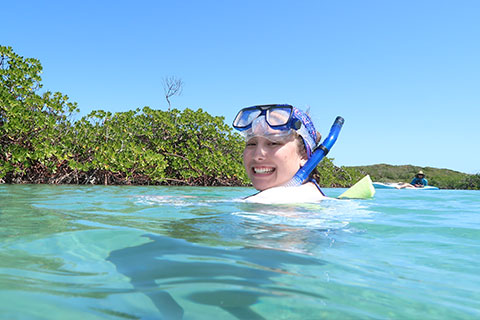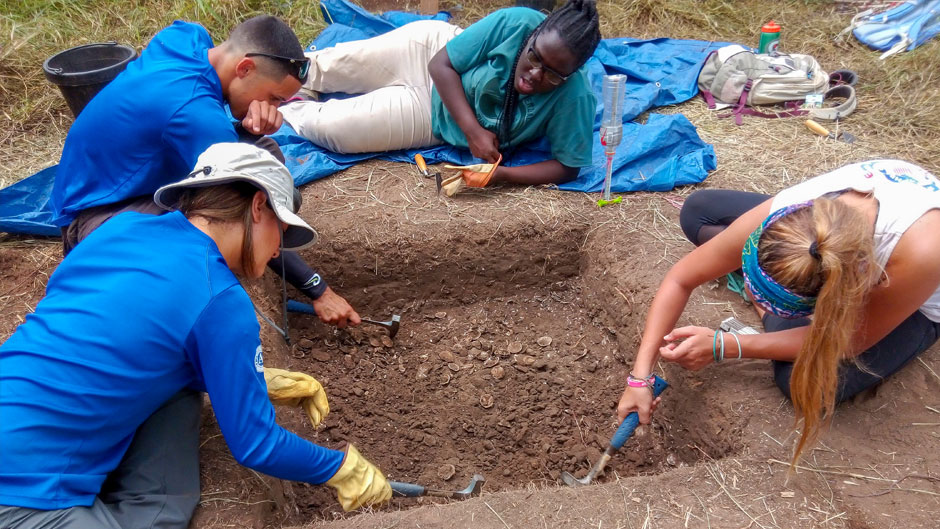For some University of Miami students and faculty, spring break resulted in field trips to the Caribbean.
Associate professor William Pestle, a bio-archaeologist in the College of Arts and Sciences Department of Anthropology, spent the week with 13 UM students in Cabo Rojo in southwestern Puerto Rico, where he led them on an archaeological dig. Pestle said the trip helps him advance a multi-year research project documenting the relationship between climate change and human inhabitation in Puerto Rico’s most arid region.
“Over the last several thousand years, sea levels have risen dramatically and rainfall has fluctuated, pushing this area to conditions that would have made agriculture impossible without irrigation,” said Pestle, who is also director of the Latin American Studies program at UM. “We are trying to determine how humans living on the island [of Puerto Rico] have changed their behaviors in response to those changes in the climate.”

Yet the trip, which is part of Pestle’s spring class—Field Studies in Anthropology—also gives the students experience in basic archaeological techniques. Pestle said students interested in doing archaeology nearly anywhere in the world can use the methods they learned in Cabo Rojo. In the four years he has been taking classes to Puerto Rico, Pestle said UM students have been able to locate 43 new excavation sites.
Senior Tamia Medina, an anthropology major, said she loved participating in a dig and learned how ancient Puerto Rican natives used natural resources such as shells to make tools.
“One of my life goals is to have taken part in an archaeological dig, and this course helped me do that while also learning about a culture and a profession,” she said.
Meanwhile, associate professor of biology Kathleen Sullivan Sealey, who heads the Coastal Ecology Laboratory, spent the week on the island of Great Exuma in the Bahamas with four students. While biology Ph.D. candidate Jacob Patus examined the impact of sea level rise on coastal wetlands, Ph.D. candidate Zoi Thanopoulou investigated the influence of climate change on coral distributions.

In addition, master’s candidate Krystle Young and junior Caitlin Camarena, an ecosystem science and biology double major, also assisted Sealey to continue mapping the wetlands of the island and to document the impacts of pollution on fish habitats. They also examined the impact of the hurricanes in 2015 (Joaquin), 2016 (Matthew) and 2017 (Irma) on Great Exuma.
“With sea level rise and global warming trends, the Bahamas may be facing an increasingly large number of severe storm events in the future,” Sealey said. “Young people who have the opportunity to learn about hurricane impacts on their shorelines now will be able to incorporate this information in the future for their personal safety and protection.”

